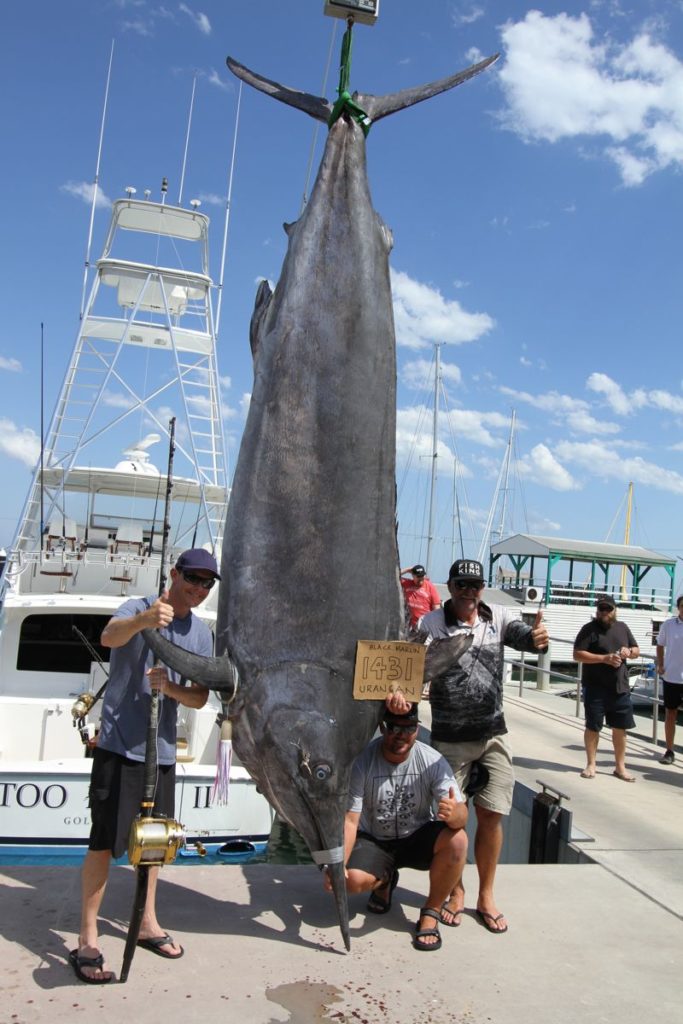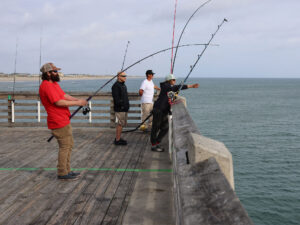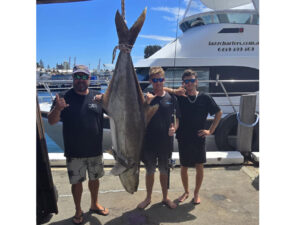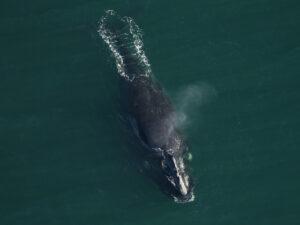
Bringing a marlin weighing an incredible 1,400-plus pounds boatside is an incredible feat, as any angler can appreciate. The crew who caught the fish in the photo here say it died during the fight, as seems the case with so many big marlin brought in to weigh. Whether the larger public had any idea of that — or cared — the fact is that, not surprisingly, this image created quite the viral uproar with strong emotions on both sides; particularly widespread was the view that it is disgraceful to kill such a magnificent animal for no good reason. That reaction brought a similarly strong but very different reaction from Ben Diggles, a Ph.D. fisheries scientist, very well-known and respected in Australia. Diggles also serves as Sport Fishing’s longtime Fish Facts expert for the far Pacific region. This op-ed originally appeared on fishingworld.com.au, the website of the largest fishing magazine Down Under, Fishing World; it’s reproduced here to share Diggles’ thoughts and to encourage thought and dialogue among SF readers and fans about this recurrent, hot-button topic. — Doug Olander, Editor in Chief, Sport Fishing. A group of anglers fishing east of Lady Musgrave Island on the southern Great Barrier Reef made history in December 2018 by catching the second largest black marlin (Istiompax indica) ever taken in Australia, weighing a whopping 649.8 kg (1,431 pounds). Weighed over a day after it was taken, the fish was somewhat dehydrated and if weighed straight away clearly would have bested the largest black marlin captured in Australia (654 kg/1441 lb), while it was not too far off the dimensions of the long reigning all tackle world record black marlin of 1560 lb (707.6 kg) taken by Alfred Glassell way back in 1953 off Cabo Blanco, Peru. Unfortunately, what will probably be most remembered about this capture, is not its biological uniqueness or scientific value, but the fact that anglers sharing the capture with their friends on social media suffered a huge outcry and abuse from all directions. Sadly, given the rise of social media, this sort of misinformed commentary after the taking of a large fish (or indeed any fish nowadays in some social circles) now appears the norm. Social research has found these attitudes originate from increasingly urbanised westernised societies which are losing touch with nature, natural processes, and where their food comes from. The Lady Musgrave fish was weighed due to the fact that it died during the final stages of the fight, and the anglers did not want to waste the specimen and were keen to donate it to science and see how big and old it actually was. But even if it was healthy and could be released, the lucky anglers were quite entitled to take the fish anyway, if only to advance scientific knowledge for the species, because of the extraordinary circumstances of the encounter. Given the fact it was caught off Lady Musgrave Island, nearly 1500 km south of the only known east coast spawning grounds for this species off Cairns, scientifically it is important to measure the gonad staging of the fish to determine if spawning was actually taking place to determine if the spawning location of black marlin is moving polewards due to global warming. Yes, these days over 95% of marlin captured by recreational anglers are released, and rightly so, but extraordinary fish invoke extraordinary circumstances. From a scientific perspective the only way to get this vital information is to kill the fish for closer examination – in other words, you can’t make the scientific omelette without breaking a few eggs from time to time. The reality is, without help from recreational anglers we would know very little about the movements or life history of black marlin. Why? Black marlin are a highly mobile species that are here today, gone tomorrow. Tagging has shown they migrate enormous distances relatively quickly – one 700 lb black marlin tagged with a popup tag off Cairns in November 2015, was found to have travelled 4393 nautical miles (8320 km) after only 240 days. For scientific researchers, these fish are hard to find, expensive to access, and almost impossible to study without the help of citizen scientists in the form of recreational anglers. The outcomes from this sort of research are then used to inform management of marlin stocks, and it is widely known that recreational anglers worldwide have been at the forefront of marlin conservation. The strongest advocates for limiting commercial marlin take in all the worlds oceans have been recreational fishers who are active through groups such as the Billfish Foundation, the IGFA and others. Why? Because recreational anglers require healthy marlin populations in order to have a quality fishing experience. Facebook is not renowned for civil, fact based discussion, and this was again evident in the case of the Lady Musgrave fish. A lot of the social media noise came from people who questioned why the fish was taken (answer, it died) and whether most other released marlin survive. These sorts of comments disclose a huge amount of ignorance from the general public on such issues. The survival rates of released marlin are well known. Many studies have shown that post-release survival rates of marlin taken by recreational anglers are high, usually around 90%, and can approach 100% when experienced anglers use lures (or circle hooks when using baits) and utilise best practice in fighting and handling the fish (tagging and releasing the fish beside the boat, no air exposure etc.). Examples of marlin that were tagged, released, then recaptured again in under 10 minutes during tournaments off Port Stephens show that properly captured and released marlin have excellent survival rates and no significant impairments (for more, see http://www.fishingworld.com.au/news/tagged-marlin-recaptured-after-10-minutes-at-liberty). Other responses on social media questioned the activity of catch and release angling itself. Catch and release angling has a long history, but has risen in popularity in recent decades as a means of further reducing recreational fishing related impacts on fish populations, while maintaining the associated social and economic benefits to anglers and society. If catch and release angling is conducted using best practice methods, many scientific studies have shown the released fish generally has a very high chance of survival with little to no measurable impacts on fitness. Thus catch and release is proven to provide substantial positive benefits to fish populations, ecosystems, anglers and wider society. Despite this, in some European countries (e.g. Germany and Switzerland), the practice of voluntary catch and release angling has been outlawed due to cultural, moral, and political reasons based on “feelings based” fish welfare and animal rights philosophies. It is these sorts of animal rights undertones that populated many of the social media opinions against catch and release marlin fishing. The problem with animal rights philosophies when they are applied to wild fish is that a healthy aquatic environment is a food chain where huge numbers of fishes die each day as food for other predatory fishes. This natural mortality is a situation to which fish are well adapted via natural selection that in many cases has favoured development of their ability to produce many thousands (or even millions) of offspring each spawning, provided the fish remain in a clean, healthy environment where human threats from pollution and overfishing are well managed and critical processes like natural selection are allowed to remain unimpeded . In fact, because of the unique biological and ecological characteristics of fishes, many of the traditional “feelings based” welfare concepts originally devised to protect the welfare of domesticated birds and mammals are simply not appropriate for wild fish. This is because the animal rights and welfare theories behind the “feelings based” approach cannot adequately explain why we should, for example, stop human predation on fishes on one hand, but on the other hand, not attempt to intervene to stop the suffering (or “rights violations”) of other fishes in terms of their predation upon each other. Indeed, a literal interpretation of animal rights philosophy is that one acceptable solution to predation is to “humanely eliminate all predators”, and because humans alone can determine what is morally right or wrong, we are therefore obliged to act and protect the so-called rights of prey species. Like other billfish, black marlin are apex predators that grow extremely rapidly by feeding mostly on small tunas, but also other fishes, squids, cuttlefishes, octopods, and even large crustaceans. The secret to black marlin growing so fast is the fact they eat a huge volume of food, and being an apex predator this means they kill and eat many thousands of other fish during their lifetime. So if the animal rights logic is applied, one could argue that by taking a marlin out of the ecosystem, you are actually “saving the lives” of thousands of other fish. So in this way, killing marlin is actually consistent with animal rights philosophy. Go figure. Clearly, animal rights philosophies and feelings-based welfare concepts fundamentally are fundamentally flawed when dealing with critical natural processes such as predation and natural selection that underpin the basic function and integrity of natural aquatic ecosystems. In effect, animal rights theories recognize all of the individual dots (animals), but are unable to join the dots together into a coherent ecosystem. This is why more pragmatic functional and “nature based” approaches to fish welfare are required in wild fisheries, as these can be accommodated within a framework of human interaction with the aquatic environment that maintains ecosystem integrity. A few of the social media rants against marlin fishing claimed the capture process was painful, however the available scientific evidence actually suggests that fish do not “feel pain” when hooked. Indeed, studies of Atlantic cod found that fish with hooks in the mouth showed no “pain behaviour”, only head shaking. Furthermore, the angling process is actually equivalent to the control manipulations in those disputed studies that claim to have found evidence of “pain behaviour” in fish injected with acids and venoms. Of course, the control manipulations in these experiments (injecting fish with saline via needles) were not found to cause “pain behaviours”. Hooking is equivalent to penetrating with the needle, but without injecting the saline, so the upshot is angling does not cause pain by the definitions used by fish pain researchers, because anglers do not tip their hooks with acids or venoms. This scientific reality is a very different to that portrayed by animal rights groups, who need to generate controversy and emotive arguments and through that gain the funding they need from the public to operate. As an aside, black marlin not only live hard, they die young – the oldest fish reliably aged is only around 15 years. Studies show all the big black marlin are females with an age at first maturity of 4-5 years old, and each fish spawns many millions of eggs (up to 40 million each spawning season), so its likely the Lady Musgrave fish had spawned hundreds of millions of baby marlin during the previous decade of her lifetime. Sure, most of those larvae would have been eaten by other fish, but in doing so she has done her job to contribute to the future of her species. Such is the staggering reproductive output of black marlin, portraying them as equivalent to a whale, an African elephant, rhino or tiger (as is often done on social media) is completely and utterly misleading…. Finally, the economic benefits of marlin fishing are well known, but what is less well known is that recreational fishing of all types, including for marlin, is an activity that exists within broader human dimensions that include socio-economic factors as well as complex interactions between the fishing activity itself, ecosystem functions, development of urban and rural communities and human health and welfare. Numerous studies have investigated the human health and welfare benefits generated from recreational fishing, including: physiological benefits such as improved cardiovascular health resulting from reduced blood pressure, heart rate and cholesterol improvements in general health and well-being for children, troubled or disadvantaged youths, the elderly and disabled reductions in antisocial behaviour and crime rates from troubled youths engaged in fishing reduction of stress, improvements in mental health, improved recovery from post traumatic stress disorders, and alleviation of symptoms of anxiety and depression improved immunity and resilience to stressful life events improved recovery from breast cancer surgery in women, improved relationships with family and friends, maintaining connection and a sense of place within the natural world, and more. In other words, the interactions between recreational fishers, fish and their environment generate multiple benefits to human health and welfare, and the economy. However all of these economic and societal benefits cannot be obtained if recreational fishers cannot catch a fish, or are prevented from catching fish. For the full original version of this article, see http://www.fishingworld.com.au/news/marlin-madness.








